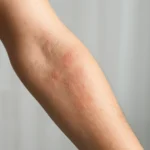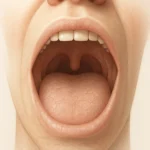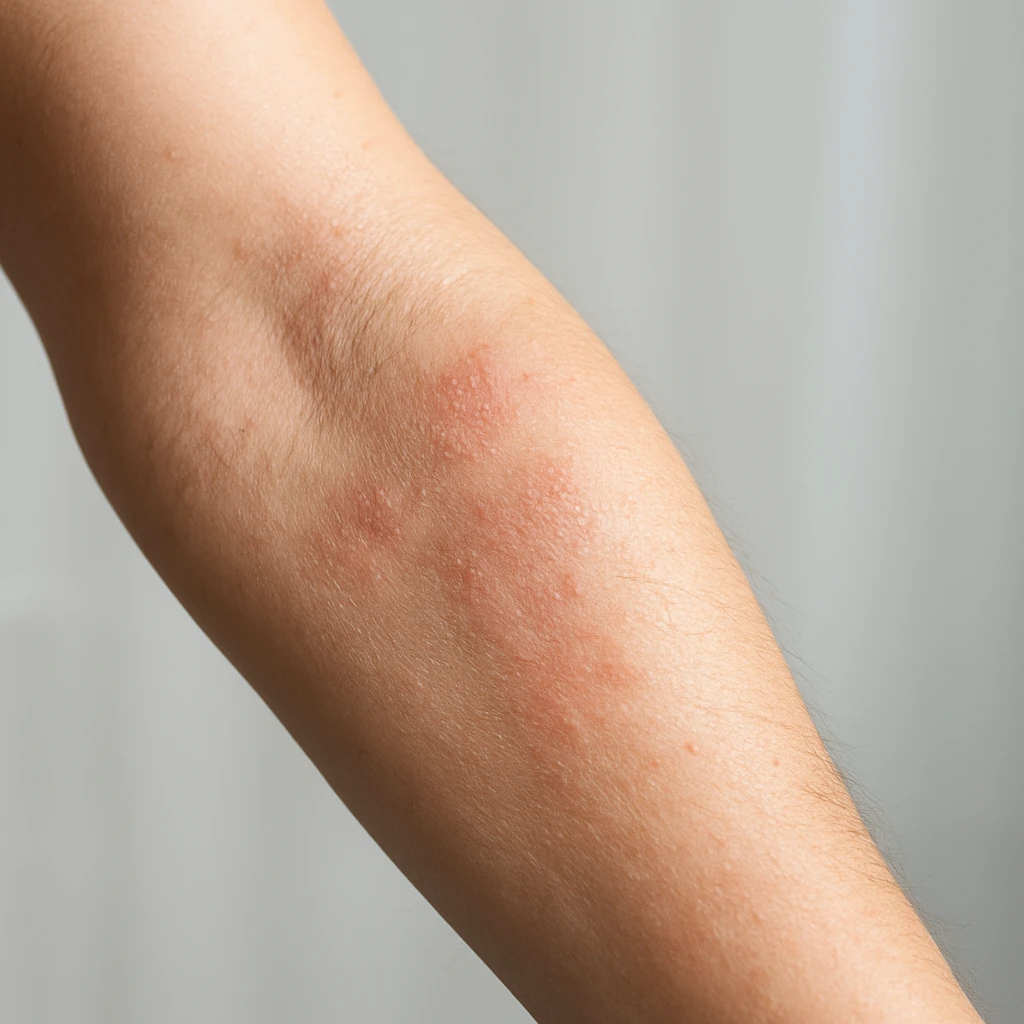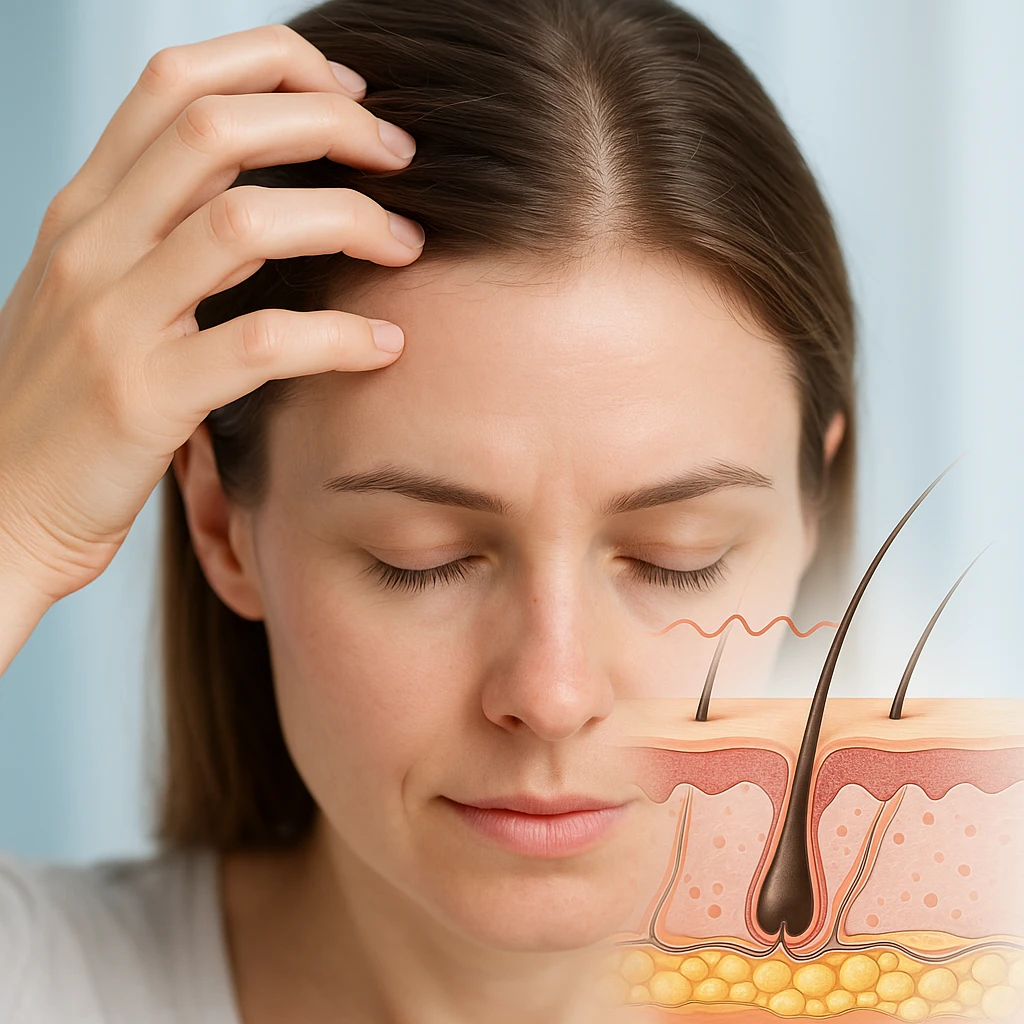
Eczema Patches in Children and Adults: What to Know
Eczema Patches and Their Clinical Presentation
Eczema patches are areas of skin that become inflamed, itchy, and visibly irritated as part of a chronic skin condition. These patches often change over time, with periods of improvement and flare. Many individuals describe eczema not as a single event but as a pattern of symptoms that can shift in intensity, area, and discomfort. Recognizing how eczema appears on the skin and where it tends to occur is an important step toward understanding the condition and supporting appropriate care.
Typical Appearance
Eczema patches commonly present as areas of skin that are pruritic, meaning intensely itchy. They are often erythematous, or red, and xerotic, meaning dry or rough to the touch. During more active flares, the surface may appear scaly or thickened from repeated scratching. Some patches may also show signs of weeping or crusting, which indicates that the skin barrier has been disrupted. The appearance can vary from person to person and may even differ on different parts of the same body.
- Intense itch (pruritus)
- Redness and dryness (erythematous, xerotic skin)
- Scaling or thickened areas during flares
- Possible weeping or crusting if the skin barrier is disrupted
This variability in surface texture and coloration can be frustrating for those affected, as patches may improve in one area while new areas become irritated. The persistent itch can also interfere with daily activities and sleep, contributing to a cycle in which scratching further aggravates the skin. Understanding these visual and tactile characteristics helps in recognizing eczema early and describing symptoms clearly during a clinical evaluation.
Where Patches Commonly Appear
The distribution of eczema patches can differ depending on age. In infants, patches often appear on the cheeks, scalp, and outer surfaces of the arms and legs. The skin in these regions is more exposed and may be more vulnerable to dryness and irritation. As children grow older, eczema more commonly affects flexural areas-such as the creases of the elbows, behind the knees, and the sides of the neck. These regions are prone to friction and moisture changes, which can contribute to flare activity.
- Infants: cheeks, scalp, and extensor surfaces of limbs
- Older children and adults: flexural areas such as elbows, knees, and neck
- Adolescents and adults may also develop involvement on the hands, wrists, or chest
In adolescents and adults, flexural involvement often continues, though patches may also appear on the hands, wrists, and upper chest. The pattern may shift during times of stress, weather changes, or when the skin barrier becomes more compromised. While the appearance and location may differ, the underlying features-itch, redness, and dryness-remain central to the presentation of eczema patches.
Why Eczema Happens: Barrier Dysfunction, Immune Responses, and Trigger Patterns
Eczema develops through a combination of skin barrier vulnerability and immune system activation. These internal factors interact with the external environment, leading to patches that can flare, improve, and recur over time. Understanding the mechanisms behind eczema helps clarify why symptoms vary across individuals and why certain exposures can trigger noticeable changes in the skin.
Skin Barrier Impairment
The outer layer of the skin functions as a protective barrier, helping to retain moisture and shield the body from irritants and allergens. In eczema, this barrier is not as effective, which allows greater transepidermal water loss. As moisture escapes more easily, the skin becomes dry and more sensitive to external contact.
This reduced barrier integrity also permits irritants and allergens to penetrate more deeply into the skin. When they reach underlying tissues, these substances are more likely to provoke irritation or discomfort. As a result, the skin may feel persistently dry, reactive, or easily inflamed. This barrier fragility plays a central role in the chronic nature of eczema and the tendency for flare-ups when the skin is stressed.
- Increased moisture loss due to weakened barrier
- Greater sensitivity to everyday irritants
- Higher likelihood of discomfort and inflammation
Immune System Involvement
In addition to barrier disruption, eczema involves a heightened immune response. The immune system in affected individuals tends to show a Type 2-skewed inflammatory pattern. This means certain immune signals are more active, contributing to ongoing inflammation in the skin. Even small exposures to irritants or environmental shifts may provoke an amplified immune reaction.
The result is a cycle in which the immune system continually responds to perceived threats at the skin surface, sustaining redness, swelling, and itch. This cycle can be difficult to interrupt, especially if both barrier weakness and immune sensitivity are present simultaneously. These dual factors explain why eczema often behaves as a chronic condition rather than a temporary irritation.
Trigger Categories
While underlying biology sets the stage for eczema, certain triggers commonly intensify symptoms. Irritants such as soaps and detergents can strip moisture from the skin and provoke flare-ups. Environmental conditions can also contribute; low humidity may increase dryness, and heat or sweating can aggravate existing irritation by altering moisture balance on the skin.
Exposure to allergens may also worsen eczema activity, especially if the skin barrier is already compromised. In addition, skin infections can develop more easily when the barrier is weakened, and these infections can further amplify inflammation. Recognizing how these factors interact can help individuals understand why eczema often feels unpredictable and why flares may become more noticeable during certain seasons, activities, or exposures.
- Irritants: soaps, detergents
- Environmental conditions: low humidity, heat, sweating
- Allergens: increased sensitivity when the barrier is compromised
- Infections: can amplify inflammation when present
Diagnosis and Distinguishing Eczema from Similar Skin Conditions
Identifying eczema patches relies on recognizing characteristic features in how the skin looks, feels, and behaves over time. The process centers on observing patterns rather than relying on a single test result. Because eczema can resemble other skin conditions, clear clinical evaluation helps avoid confusion and supports appropriate management.
Clinical Evaluation
Diagnosis is clinical, meaning it is based on a combination of symptom history, the appearance of the skin, and the distribution of affected areas. Clinicians typically assess the duration and persistence of itch, as well as whether symptoms follow a chronic or recurrent pattern. The morphology, or visual characteristics of the patches, plays a key role, as does their placement on the body.
The pattern of distribution often provides essential clues. For instance, flexural involvement such as patches in the elbows or behind the knees is a common feature in older children and adults. The clinician considers how symptoms have evolved, whether flares appear in cycles, and whether the patient has a personal or family history of allergic tendencies. These factors together help form a reliable picture of eczema, even when the presentation varies slightly between individuals.
Why Tests Are Not Usually Required
No single laboratory test confirms eczema in routine care. While tests such as bloodwork or skin swabs may be used to rule out complications or secondary infections, they do not diagnose eczema itself. For most individuals, the diagnosis is made based on consistent clinical features rather than test results.
- Diagnosis relies on symptom history and characteristic skin findings.
- Tests may assist only when infection or other conditions are suspected.
- Clinical evaluation remains the primary method of identifying eczema.
Allergy or patch testing may sometimes be used to investigate possible triggers if symptoms are persistent or difficult to interpret, but these do not replace clinical assessment. The condition is best understood through direct observation and careful patient history rather than relying on a specific test value or laboratory marker.
Key Differentiating Features
Because several skin conditions can resemble eczema patches, distinguishing among them is important. Tinea corporis, a fungal infection, can appear as ring-shaped patches and may initially be mistaken for eczema. However, its border is often more clearly defined, and it may respond differently to moisture and topical agents.
Allergic contact dermatitis also shares similarities, but it tends to occur in areas directly exposed to a specific allergen or irritant. The pattern of involvement may reflect the site of contact, such as wrist irritation from a watch strap or facial irritation from cosmetic products. Psoriasis, another condition that can mimic eczema, typically features thicker plaques with a more uniform scale and may favor locations such as the scalp or extensor surfaces.
| Condition | Typical Appearance | Common Distribution Pattern |
|---|---|---|
| Tinea corporis | Ring-shaped patches, clearer borders | Variable, may spread outward |
| Allergic contact dermatitis | Inflammation at point of contact | Localized to exposure site |
| Psoriasis | Thicker plaques with uniform scale | Often on scalp or extensor surfaces |
Recognizing these subtle differences allows for a more accurate clinical diagnosis. By evaluating the appearance, distribution, and personal symptom history, clinicians can distinguish eczema from conditions that look similar but require different treatment approaches.
Evidence-Based Management, Prevention, and Special Considerations
Managing eczema involves a layered approach that addresses both the skin barrier and the inflammatory processes that contribute to flare-ups. Treatment typically begins with daily skin care routines designed to strengthen the skin, followed by targeted anti-inflammatory therapy when patches worsen. More advanced therapies may be used when symptoms are persistent or significantly affect everyday functioning. Preventive strategies play an ongoing role, helping reduce the frequency and severity of flares. In addition, certain forms of eczema, such as nummular eczema, have distinct features that are important to recognize within this broader management framework.
Rebuilding the Skin Barrier
Restoring and supporting the skin barrier is central to eczema management. Daily emollient therapy helps replenish moisture and protect the skin from environmental stress. Regular moisturization reduces dryness and can lessen the likelihood of flare activity by maintaining the skin’s natural hydration. Gentle cleansing practices further support barrier repair by minimizing friction and avoiding ingredients that may strip moisture.
- Apply emollients consistently, especially after bathing.
- Use gentle cleansers that avoid excessive drying.
- Maintain regular hydration routines to reduce flare likelihood.
Because the skin barrier plays an active role in eczema symptoms, consistency in moisturizing is important. Applying emollients after bathing can help lock in hydration. While individual routines may vary, the overarching goal remains the same: maintain skin softness, prevent dryness, and support the barrier’s ability to protect against irritants and allergens.
Managing Inflammation
When flare-ups occur, addressing inflammation becomes the next priority. Topical corticosteroids are first-line therapies for acute inflammation, and their potency is typically selected based on the location and severity of the patch. Areas with thinner skin may require lower potency formulations, while thicker areas may benefit from stronger preparations.
Nonsteroidal topical agents are also available as steroid-sparing options, particularly for sensitive areas where long-term corticosteroid use may be limited. These medications help control inflammation while supporting a balanced approach to ongoing skin management. Together, emollient therapy and targeted anti-inflammatory treatment can effectively control many mild to moderate presentations of eczema.
When Advanced Therapy Is Needed
In some cases, symptoms may remain frequent, severe, or functionally disruptive despite careful use of topical treatments and preventive care. Systemic or biologic therapies are reserved for these moderate to severe cases. These treatments are generally managed by specialists who monitor effectiveness and adjust therapy as needed.
The decision to move to advanced treatment often considers how symptoms affect sleep, daily comfort, and emotional well-being. Specialist guidance ensures that systemic options are used appropriately, balancing benefits with careful monitoring.
Preventing Complications and Flares
Eczema can make the skin more vulnerable to infection. Secondary bacterial or viral infections may occur when the skin barrier is disrupted. Recognizing signs of infection early and seeking timely evaluation can prevent complications. Incorporating preventive measures is also key to maintaining skin stability.
- Identify and avoid personal triggers when possible.
- Maintain daily moisturization to support barrier resilience.
- Monitor for signs of infection such as increased redness or tenderness.
Trigger avoidance and gentle skin care can reduce flare frequency. Factors such as heat, sweating, or certain cleansing products may influence symptoms. Identifying and modifying these triggers helps maintain a more stable skin environment and reduces irritation.
Special Case: Nummular Eczema
Nummular eczema is a specific form of eczema characterized by discrete, coin-shaped eczematous plaques with well-defined borders. While its appearance differs from more common flexural eczema, the underlying principles of management are similar. Reinforcing the skin barrier and using anti-inflammatory therapies during flares form the foundation of care.
Recognizing this presentation helps ensure that nummular eczema is managed effectively within the broader treatment strategies used for eczema overall.
Frequently Asked Questions
Do eczema patches always stay in the same place?
No. Eczema patches can shift over time, sometimes improving in one area while appearing in another. This pattern reflects changes in the skin barrier and exposure to triggers rather than permanent damage.
Why do eczema patches itch so intensely?
The itch is linked to both dryness from a weakened skin barrier and inflammatory signaling in the skin. This creates a cycle where itching leads to scratching, which can further irritate the skin.
Can stress make eczema patches worse?
Stress does not cause eczema, but it can influence the immune system and make patches more noticeable or harder to control. Many people report flare-ups during emotionally or physically demanding periods.
Are eczema patches contagious?
No. Eczema is not caused by infection and cannot be spread to others. However, the skin can become more vulnerable to secondary bacterial or viral infections if the barrier is disrupted.
How long does it take for eczema patches to improve?
Improvement varies from person to person and depends on how the skin responds to moisturization, trigger reduction, and anti-inflammatory treatment. Some flares calm within days, while others take longer.
Do all forms of eczema look the same?
Not exactly. While itch, redness, and dryness are common across eczema types, patterns can differ. For example, nummular eczema forms coin-shaped plaques, while classic atopic dermatitis often affects flexural areas.
Can seasonal changes affect eczema patches?
Yes. Cold, dry air or hot, humid weather may each influence flare frequency by altering skin hydration and sweat exposure. Many people notice seasonal patterns in their symptoms.
When should someone seek medical evaluation for eczema patches?
Medical attention is helpful if itching disrupts sleep or daily comfort, if patches do not improve, or if signs of infection appear (such as increased pain, crusting, or warmth). A clinician can help clarify diagnosis and guide treatment options.




















